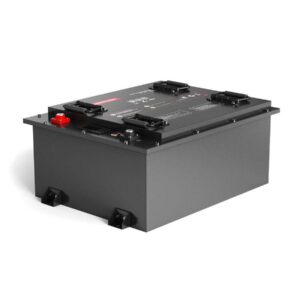
How long do batteries last in a car?
Car batteries typically last 2-5 years, with lifespan influenced by battery type, maintenance practices, and usage patterns. Standard flooded lead-acid batteries require electrolyte checks and last 2-3 years, while sealed AGM/EFB variants endure 3-5 years. Frequent short trips (<5 km) accelerate sulfation, reducing capacity by 15-30% annually. Proactive maintenance—monthly voltage checks, terminal cleaning, and avoiding deep discharges—can extend service life beyond OEM expectations.
Best Replacement 12V Battery Brands for Toyota Prius
What determines car battery longevity?
Battery lifespan hinges on three critical factors: chemistry type, environmental conditions, and electrical load management. AGM batteries outperform flooded models in vibration resistance and cycle life.

Deep Dive: Temperature extremes are primary killers—batteries lose 33% capacity at -18°C and suffer plate corrosion above 27°C. Modern vehicles with start-stop systems demand enhanced flooded batteries (EFB) or AGM types rated for 3-5× more cycles. A 2024 study showed urban taxis replacing batteries every 14 months versus 42 months for highway commuters. Pro Tip: Use load testers every 6 months—surface voltage readings often miss developing faults. Consider this analogy: A battery is like tires—proper inflation (maintenance) prevents premature wear, but harsh roads (electrical demands) dictate replacement timing.
How does driving pattern affect battery health?
Short-trip cycling starves batteries of full recharge, causing progressive capacity loss. Each engine start consumes 0.5-3 Ah—equivalent to 15 minutes of highway driving to replenish.
Deep Dive: Urban drivers making 10 daily starts need 25+ km of driving to maintain charge, while suburban commuters achieve balance in 15 km. Parasitic drains (alarms, ECUs) typically pull 20-50 mA—left unchecked, this drains a 60Ah battery in 50 days. Technical Spec: Minimum recharge threshold is 13.2V for 30 minutes weekly. Pro Tip: Install a battery maintainer if driving <150 km/week. But what about hybrid vehicles? Their auxiliary batteries still require maintenance despite HV system support.
| Usage Profile | Annual Capacity Loss | Typical Lifespan |
|---|---|---|
| Rideshare (200+ km/day) | 8-12% | 3-4 years |
| Short Commute (<10 km/day) | 18-25% | 2-2.5 years |
Battery Expert Insight
FAQs
Can I jump-start a car multiple times before replacing the battery?
Limit to 3 attempts—excessive cranking overheats plates, accelerating degradation. Persistent issues indicate failing cells needing replacement.
Do battery blankets prolong winter life?
Yes, maintaining ≥5°C improves cold-cranking amps by 40%. Combine with trickle charging for optimal protection.
Is 13V normal for a running car?
Healthy systems show 13.5-14.8V while driving. Below 13.2V indicates charging faults; above 15V risks electrolyte boiling.
